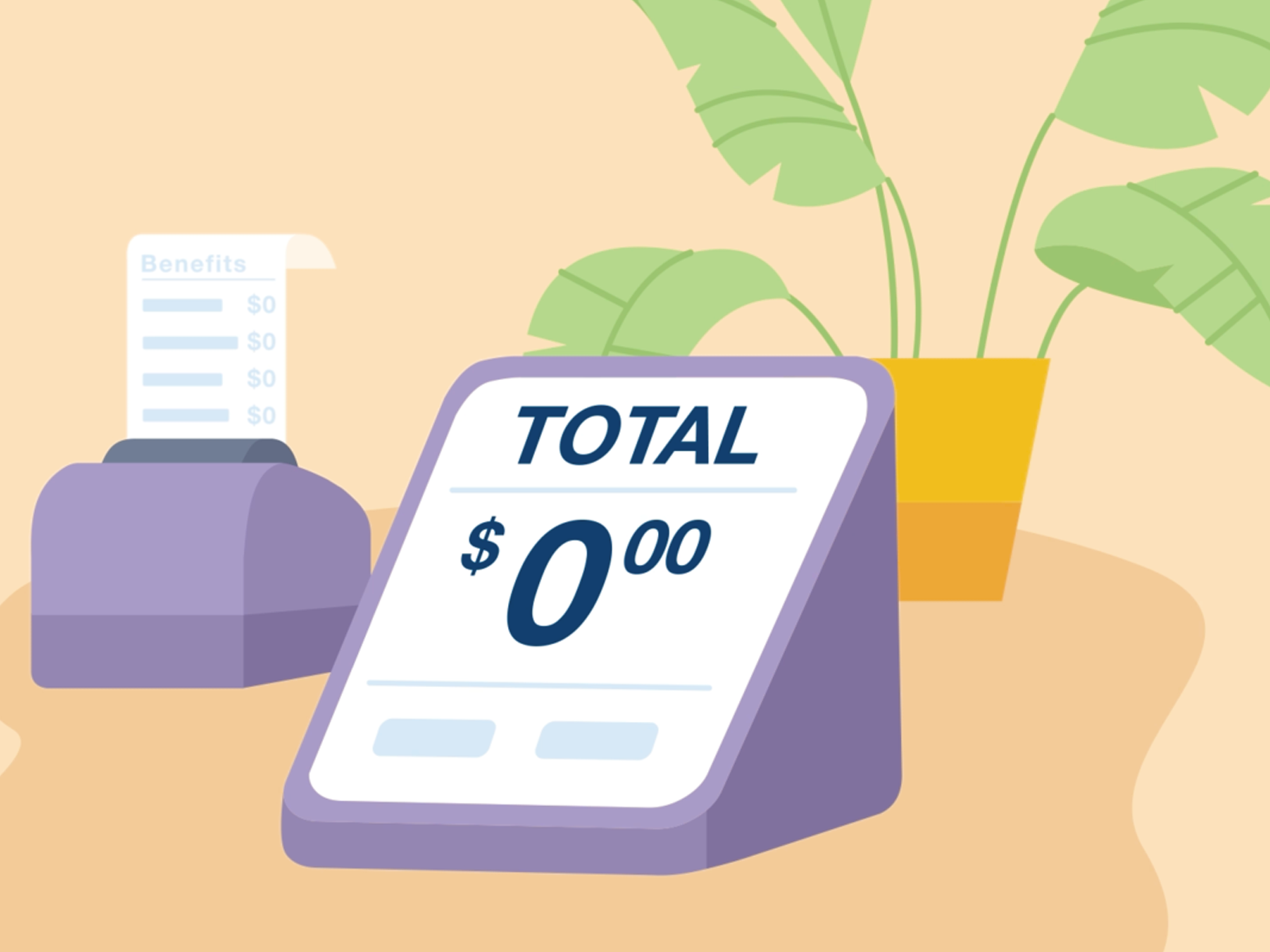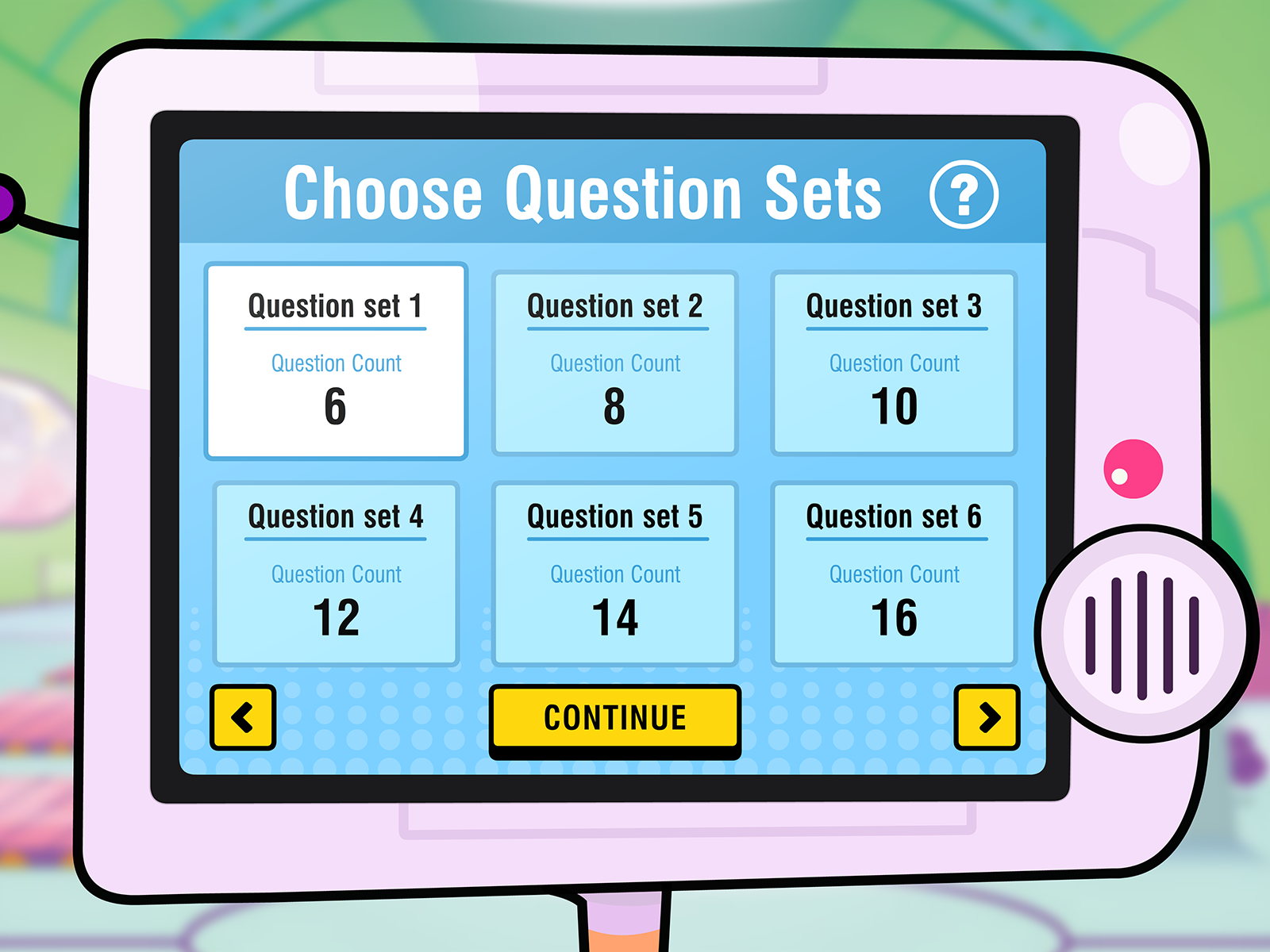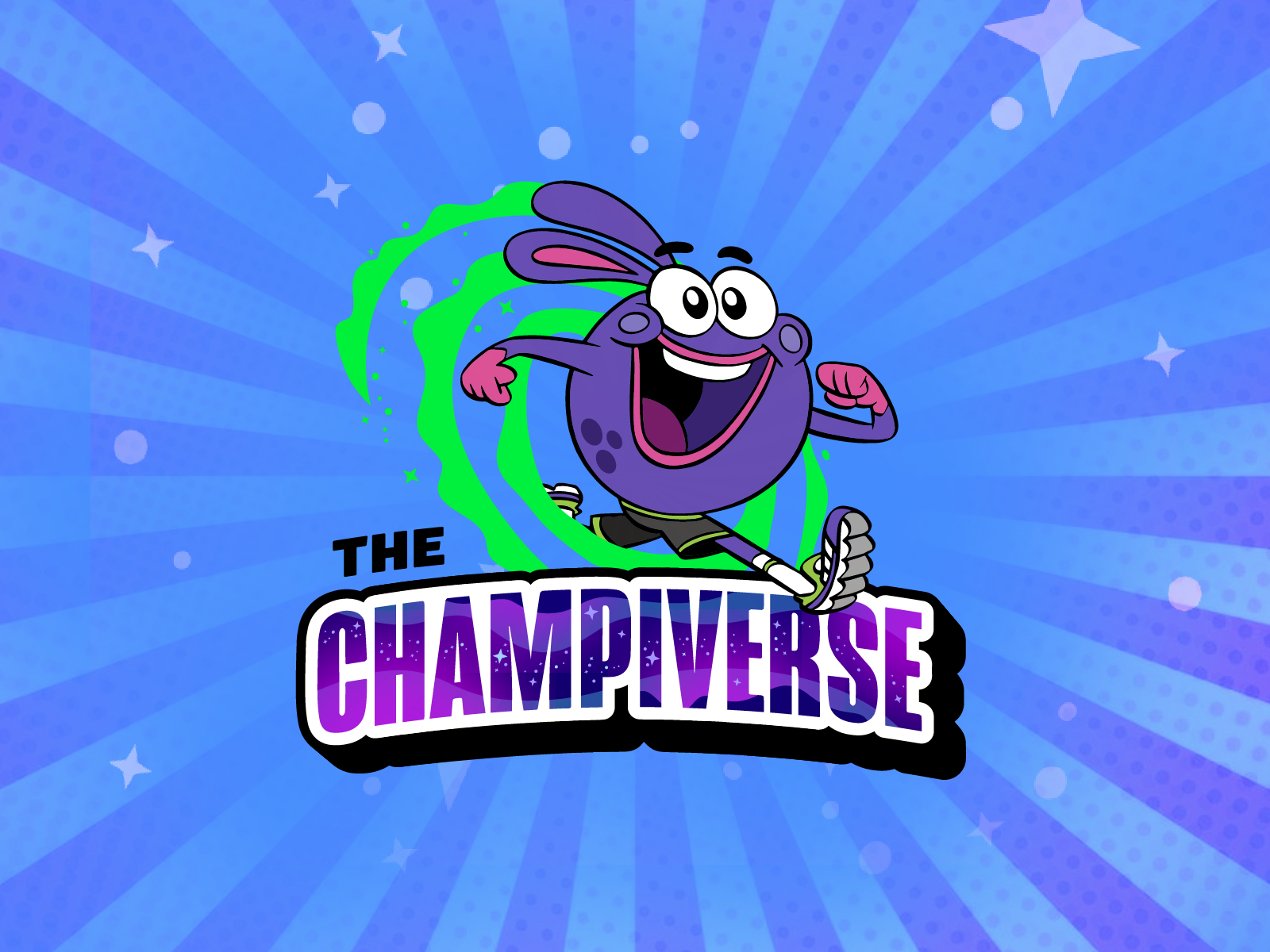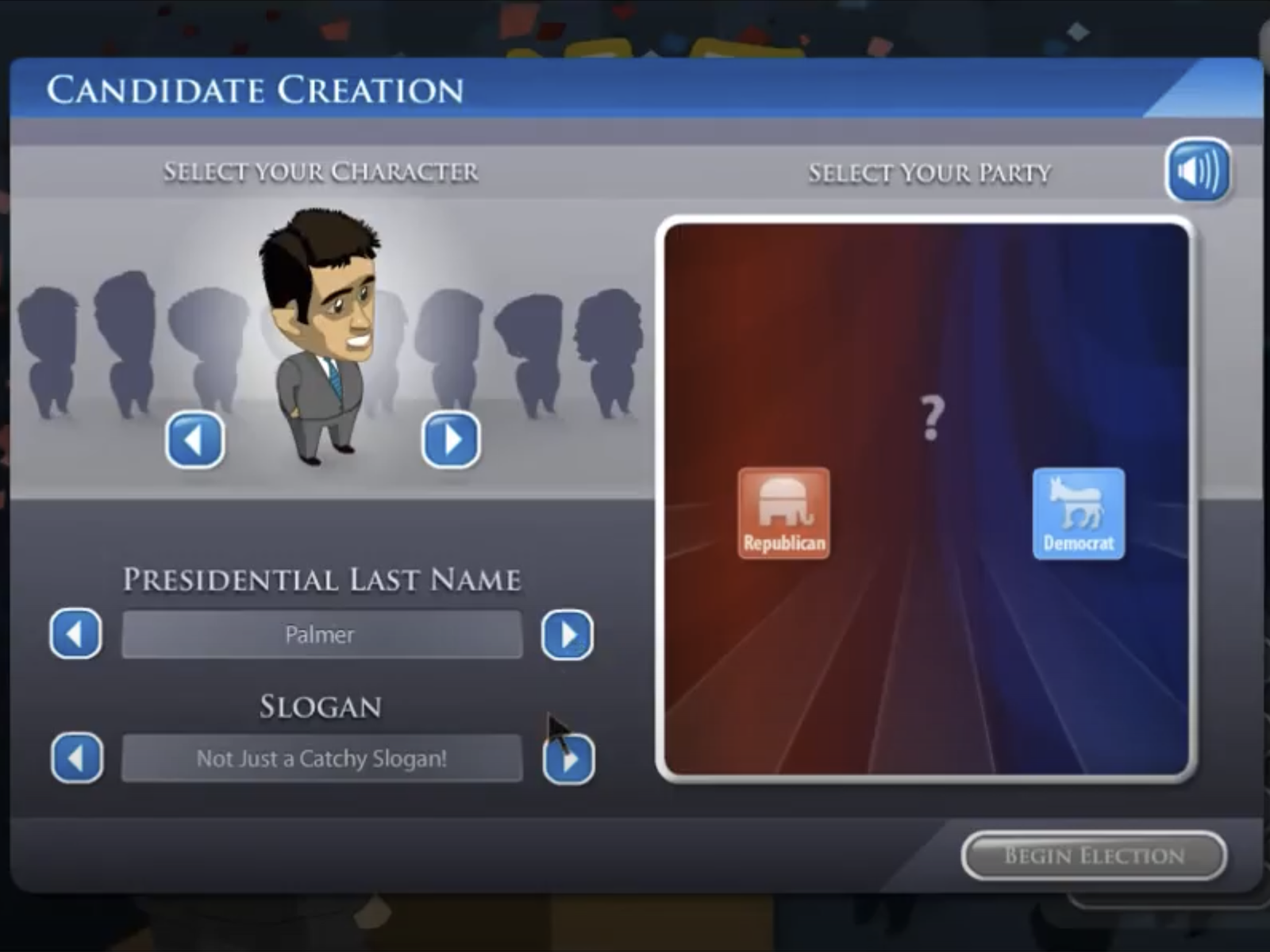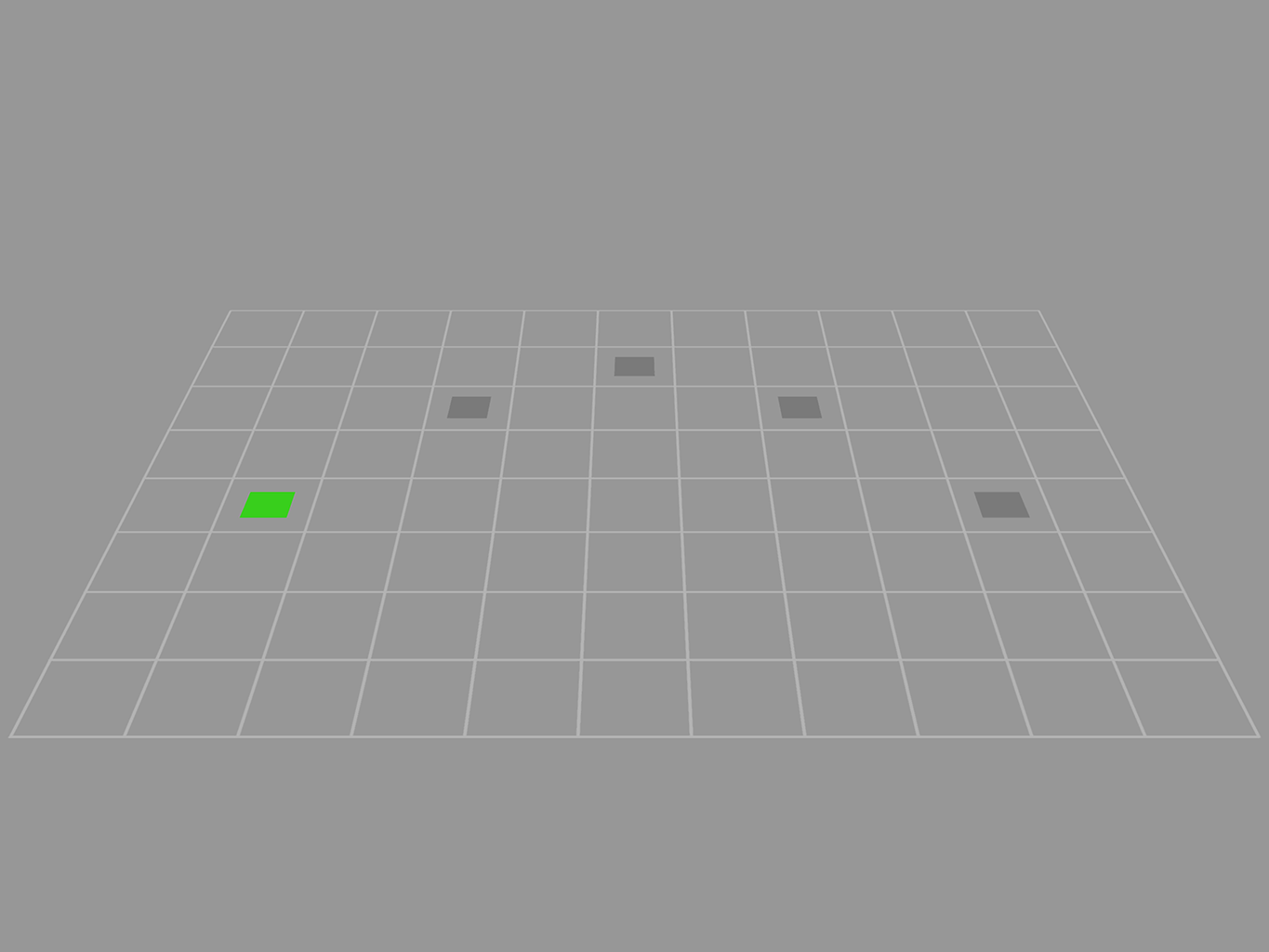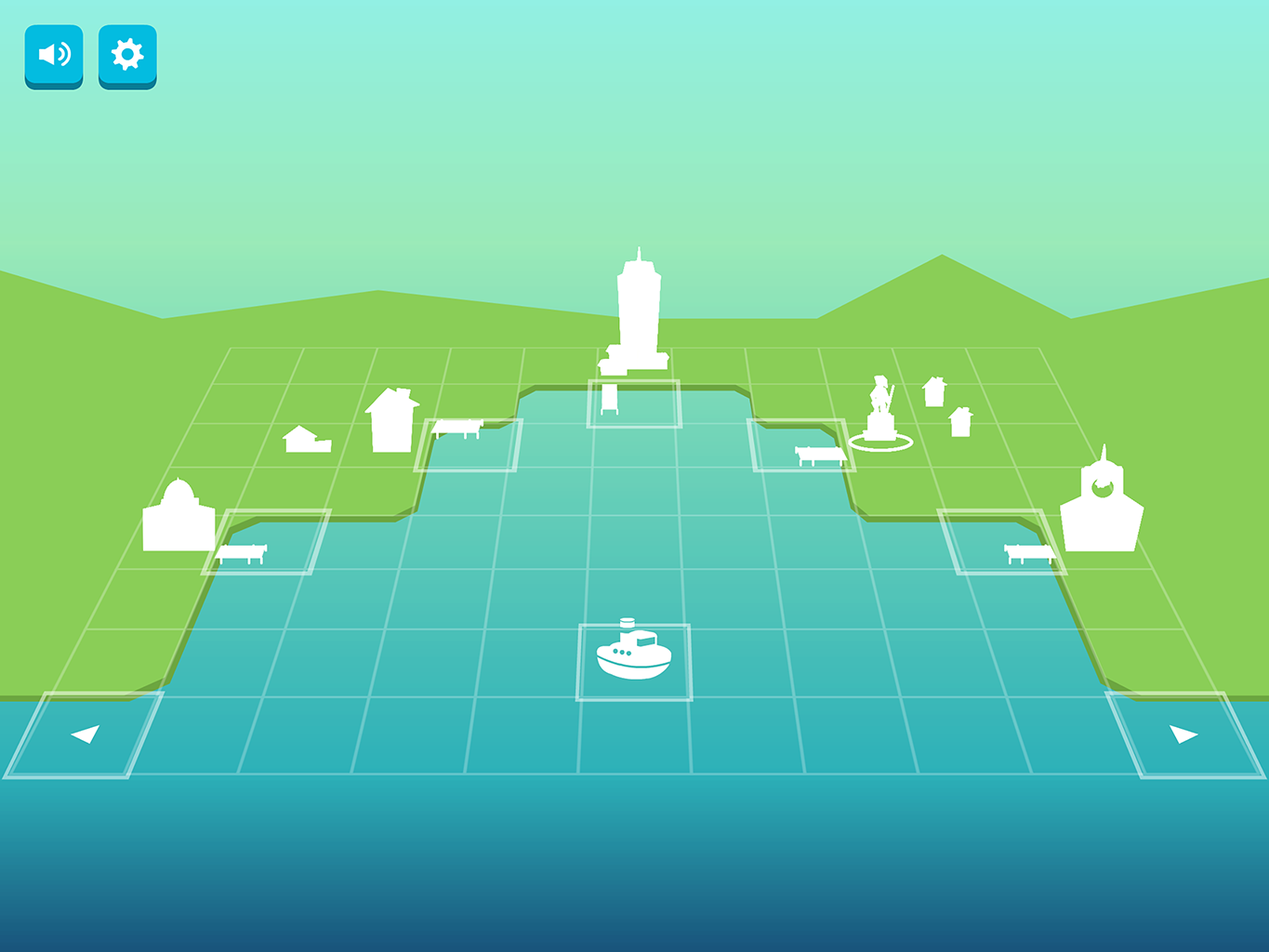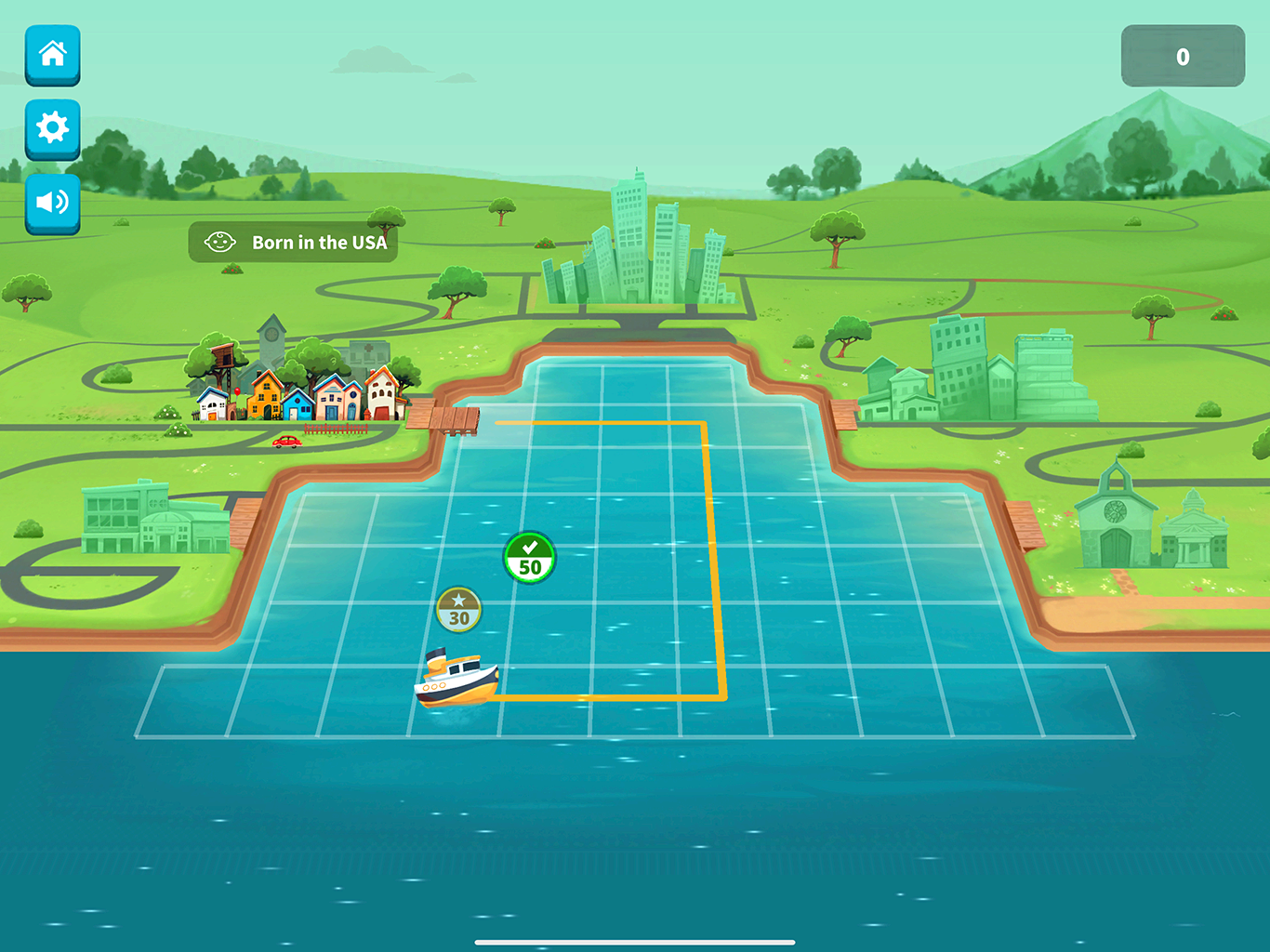B2B Motion Design
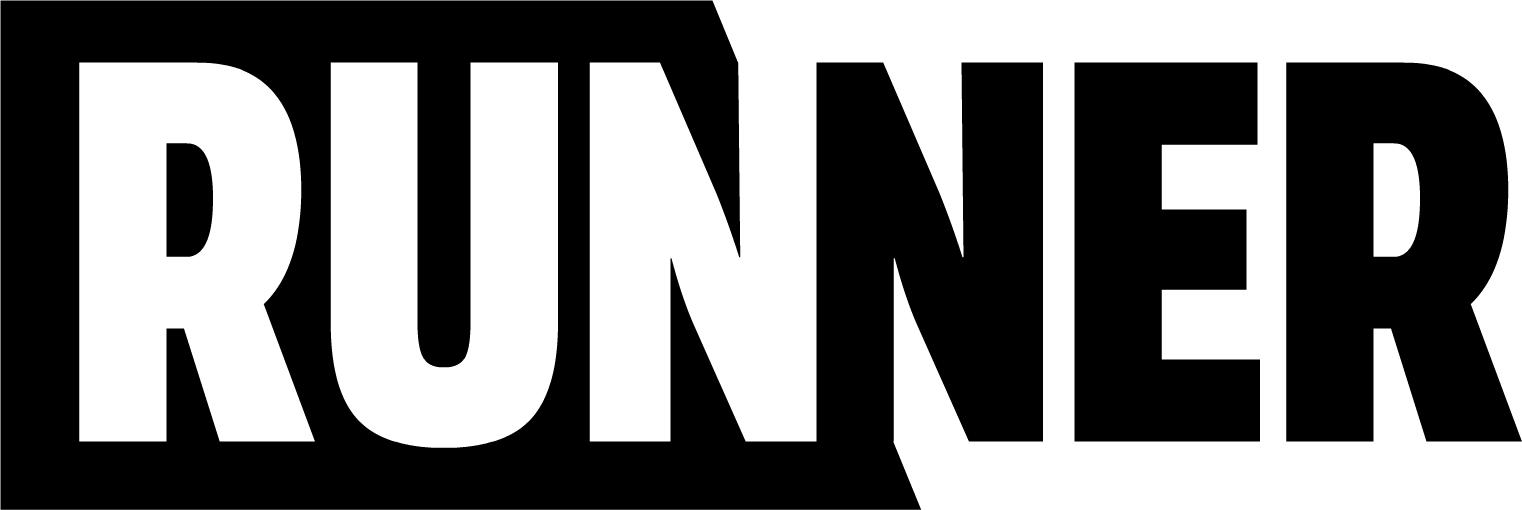
Building a B2B motion design company
Runner was a motion design studio I founded in 2016 to provide high-quality promotional and explainer videos for brands. Specializing in 2D motion graphics and narrative storytelling, Runner helped companies communicate their messages effectively through animation. Over the course of 8 years, I grew Runner from working with a single client into a full-service design and animation business that served a range of B2B clients from small businesses to global brands, focusing on scalability, creativity, and client satisfaction.
COMPANY
RUNNER
ROLE
OWNER, DESIGNER, ANIMATOR
TIMELINE
8 YEARS

Responsibilities
As the owner and primary artist, I wore multiple hats, overseeing and working on all aspects of production, from initial client engagement to final delivery. Here’s a breakdown of my responsibilities at Runner:
- Client Acquisition & Sales: Pitching and negotiating directly with clients to secure new business opportunities, preparing proposals, and managing client relationships.
- Project Management: Handling the entire project lifecycle, from client onboarding to delivering final assets. I coordinated contractors and managed timelines, budgets, and resources to ensure smooth project execution.
- Creative Direction & Production: Writing scripts, creating storyboards, designing style frames, and animating the final videos. I ensured each project adhered to the client’s vision and met high standards of design and storytelling.
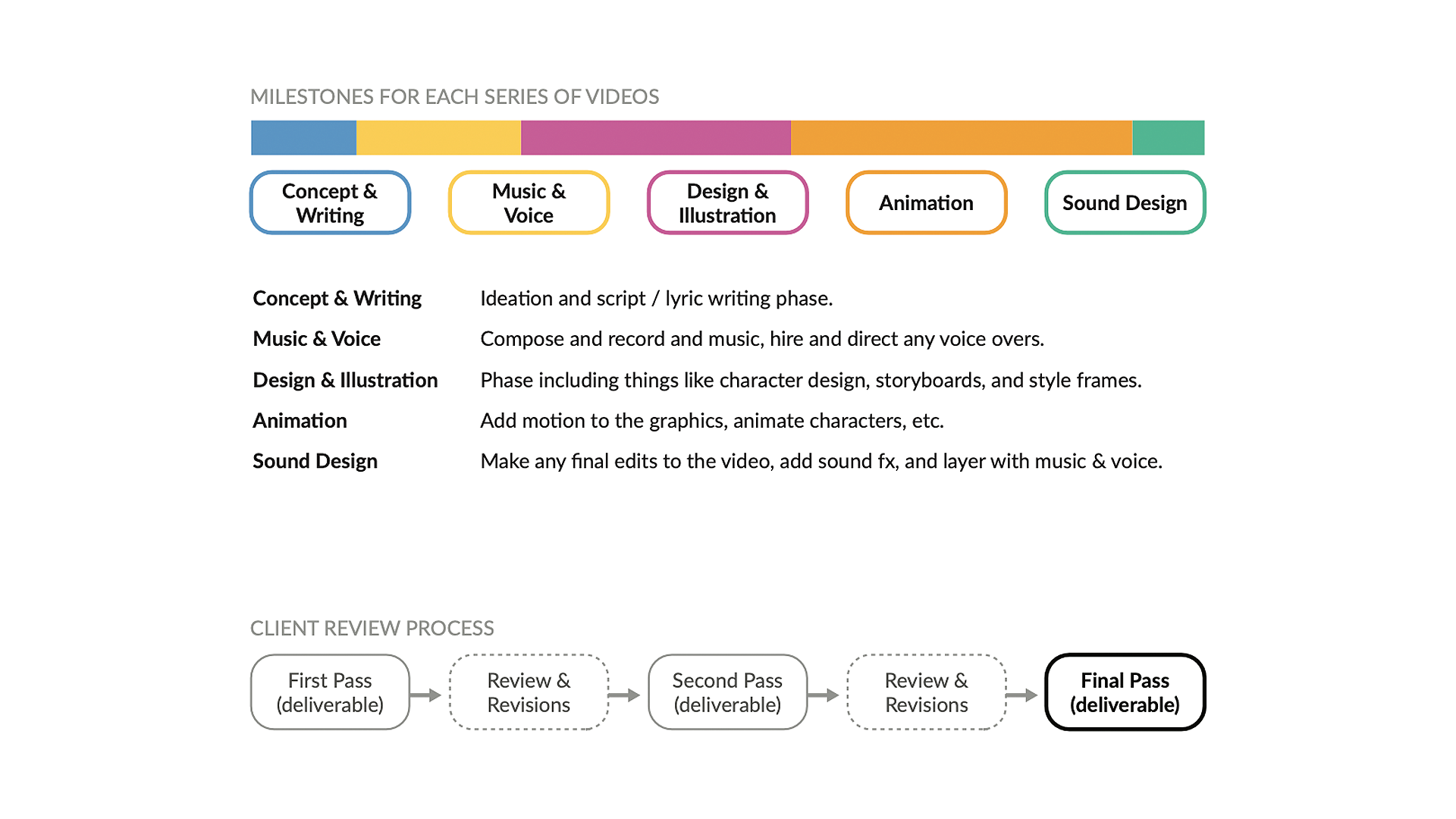
Process
The process at Runner was both structured and flexible, enabling me to adapt to a variety of client needs while maintaining consistency across projects. Below is a typical workflow:
- Client Brief: The first step was always to gather as much information as possible. I worked with clients to understand their brand, goals, audience, and success metrics.
- Script Development: After reviewing the brief, I either wrote the script myself or collaborated with the client to craft a narrative around their key messages and brand voice.
- Storyboarding: Rough sketches were created to map out the sequence of animation and refine the narrative flow. This allowed clients to see the structure and pacing of their project before any design work began.
- Design & Style Frames: I designed high-fidelity style frames to showcase the look and feel of the final animation. These served as a reference for the entire team and ensured consistency in visual language.
- Animation & Motion: Once the design was locked, I brought the visuals to life through animation, smooth motion transitions, and clear visual storytelling.
- Sound Design & Final Mix: The final phase involved adding the voiceover, sound effects, and music, to complement the animation and strengthen the overall message.
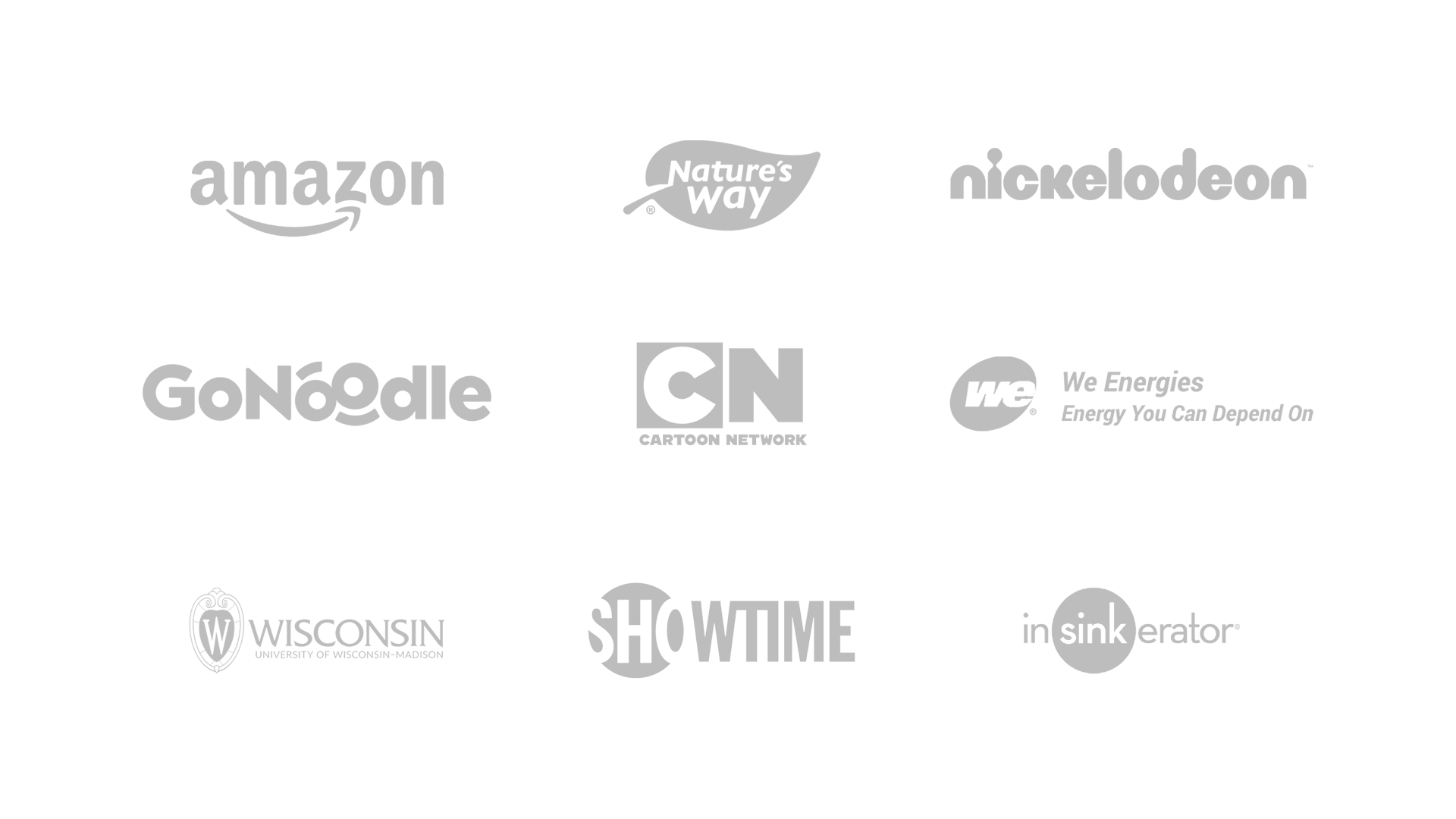
Results & Impact
While the specific ROI and performance metrics were often kept proprietary by clients, the impact of Runner’s work can be understood through the relationships I built and the ongoing success of the projects. Here are some quantifiable and qualitative results:
- Project Success: While I didn’t always have direct access to specific success metrics, the recurring nature of projects and positive client reviews suggest that the videos I produced contributed to key client goals, such as increased brand awareness, improved engagement, and clearer communication of complex ideas.
- Client Satisfaction: Feedback from clients highlighted my responsiveness, ability to deliver quickly, and attention to detail. Many appreciated the streamlined process, which helped them feel informed and in control throughout the project lifecycle.
- Repeat Clients: Many clients returned for multiple projects, showcasing the value they saw in the work. This led to long-term relationships and consistent business over the years.
- Team Expansion: As the business grew, I brought on contractors for specialized roles, scaling up production and increasing quality. This allowed me to handle larger projects and a wider variety of clients.
Key Takeaways
- A Strong Process Drives Efficiency and Client Trust
Developing a clear, repeatable process was critical for ensuring client satisfaction and meeting deadlines. From onboarding to final delivery, I was able to keep projects on track and clients informed, which helped manage expectations and reduced revision cycles. Having a structured process also helped mitigate stress and improved the overall quality of the work. - Client Relationships Matter More Than You Think
Building long-term relationships with clients was just as important as the work itself. By providing excellent customer service and consistently delivering high-quality work, I earned repeat business and referrals. Cultivating trust and keeping clients engaged throughout the process helped me secure projects and grow the business in ways that wouldn’t have been possible with a more transactional approach. - Adaptability and Scalability Are Key to Growth
Starting as a solo operation and eventually scaling to manage multiple projects at once taught me the value of adaptability. As Runner’s client base grew, I had to adjust my workflow to maintain efficiency and manage larger, more complex projects. Hiring and working with contractors allowed me to scale operations without compromising quality. - Measure Success Beyond Just Financials
While I didn’t always track the direct outcomes of each project, I realized that the success of Runner wasn’t only about revenue. Positive feedback, client satisfaction, and strong referrals were key indicators of my impact. This taught me to focus more on delivering tangible value and building relationships than solely on transactional success.
Game On! UX
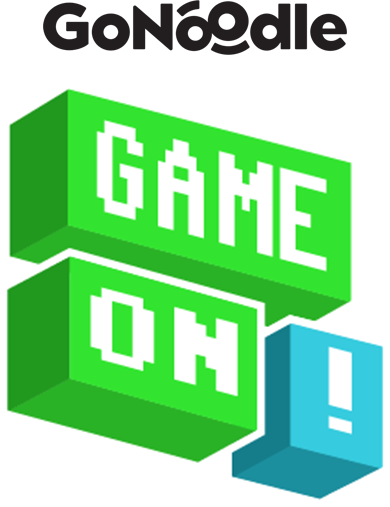
Building a platform for gamified brain breaks
GoNoodle is a video and game streaming platform with a goal of getting kids moving in the classroom and at home. After the company’s initial success they raised funding and decided to build out their games content. I was part of a three-person development studio and had the role of UX Designer and Technical Artist along with another UX Designer and a Developer. Together with GoNoodle we built their Game On channel.
COMPANY
GONOODLE
ROLE
UX DESIGNER & TECHNICAL ARTIST
TIMELINE
1 YEAR
TEAM
SMALL TEAM OF TWO UX DESIGNERS, A DEVELOPER, AND CLIENT STAKEHOLDERS

Challenge
Designing games for classroom projectors provided a unique and limiting challenge. Each game needed to combine learning opportunities and physical movement. And each game would be played by an entire classroom of kids all at once, while the teacher was responsible for providing the input.
Game Design
Each game needed a unique name, theme, and objectives.
Mega Math Marathon is a high-energy game that has students running a marathon while answering grade-aligned math problems.
Field Trip is a reaction game that takes students on wild adventures where they jump and dodge obstacles on their way to visit a tornado, an ant farm, a drop of blood, and more.
Think On Your Feet is a customizable quiz-style game show where students split into two teams and compete to answer themed multiple choice questions while following specific movement challenges.
Process
As each game had its own theme, my initial responsibility was to define the visual style of each game using mood boards, concept art, mockups, and eventually final assets.
The UI in these games was minimal, as each game focused on a movement-based activity and simple questions or math problems.
As a Technical Artist, I worked closely with the developer to integrate and optimize assets into our custom game engine.
Results & Impact
Feedback from teachers about our games was incredibly positive. As we launched the Game On channel and published each game, GoNoodle soared to around 14 million students and has been used in 4 out of 5 public classrooms in the US.
Key Takeaways
- Teacher-centered design: Focusing on the needs of teachers was central to the success of each game project.
Animating The Champiverse
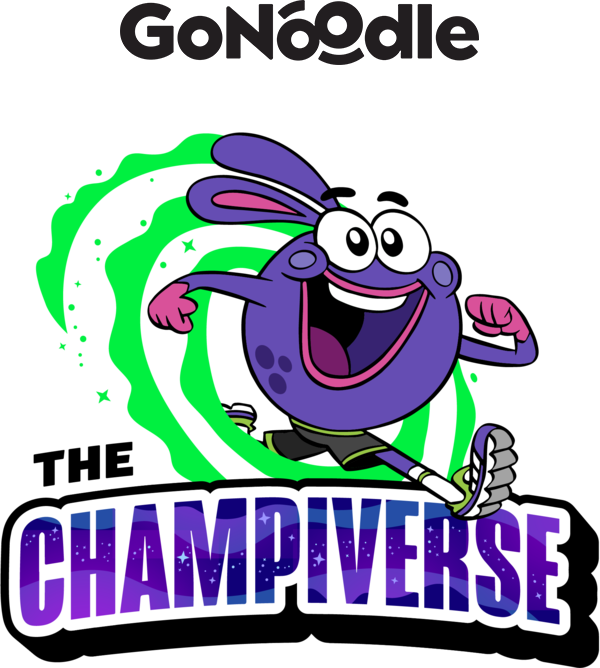
Animated Champiverse videos
GoNoodle is a video and game streaming platform with a goal of getting kids moving in the classroom and at home. After working with a small development team to build GoNoodle’s game content library, I started working solo with GoNoodle to animate their cast of original Champ characters and build out their animated content library.
COMPANY
GONOODLE
ROLE
2D ANIMATOR
TIMELINE
6 YEARS
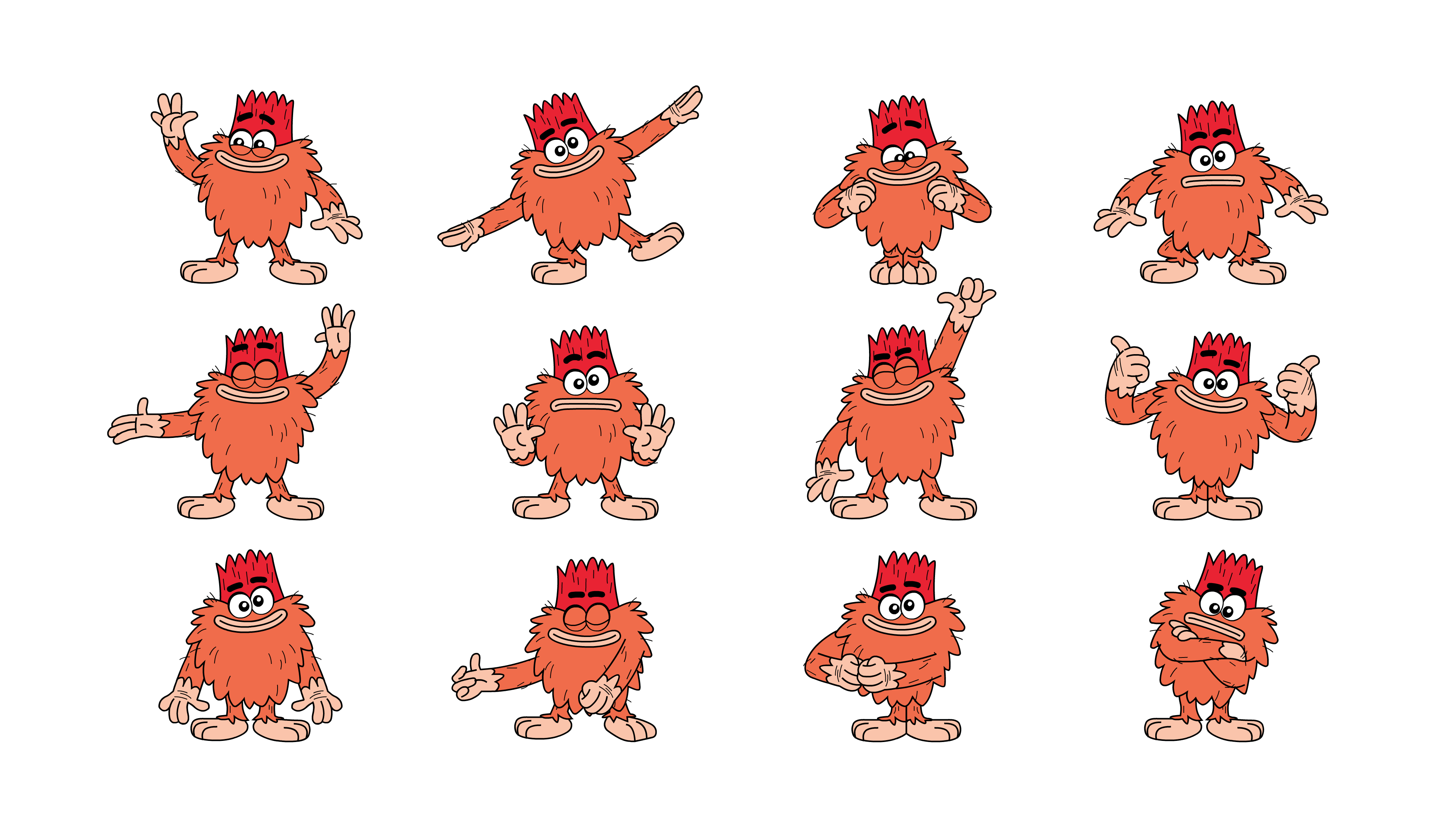
Challenge
GoNoodle has over 25 original characters that were not specifically designed for animation. And as most of GoNoodle’s content are follow-along dance videos, my task was to figure out how to animate different characters to choreographed dance sequences. And I had to do it all solo within tight budgets and deadlines.
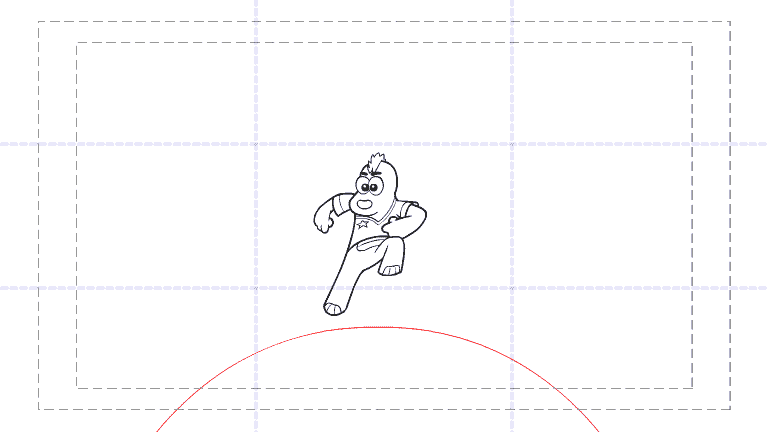
Process
Each video had a brief, a list of characters to be featured in the video, and often a video of a choreographed dance for reference.
The first step was always to storyboard each video. This helped rough out the key poses for each dance or exercise. The next step was to take the key poses from the storyboards and sync them to the audio to check the timing. This is where I would look for repeated poses and motion to save time.
Once the timing was set, I would build hybrid character rigs based on common poses, match them to the key poses, animate the in-betweens, clean up the motion, and finally animate the lip sync for each characters dialogue and / or lyrics.

Results & Impact
As with the games I helped build for GoNoodle, feedback from teachers about our animated videos was overwhelmingly positive. GoNoodle has been used by over 14 million students and has been used in 4 out of 5 public classrooms in the US. Our animated videos on YouTube have accumulated around 50 million total views.
Key Takeaways
- Character designs: Characters destined for animation need to be designed specifically for animation and references need to be created to help animators understand how each character should be rendered in various poses, angles, and emotions.
- Time equals quality: No matter how many efficiencies I found, animation is a time and labor intensive medium where every shortcut results in a lower quality result.
Learning Games UX

Educational games kids actually want to play
Filament Games is an award winning educational game development studio based in Madison, WI. During my time as a UX Designer and Technical Artist I helped create games that complemented curriculum materials from major publishers. The challenge was to design engaging, accessible experiences that not only reinforced key concepts but also captivated students’ curiosity leading to a deeper and more rewarding educational experience. These games needed to be fun, intuitive, and navigable for learners of all types of abilities.
COMPANY
FILAMENT GAMES
ROLE
UX DESIGNER & TECHNICAL ARTIST
TIMELINE
3 YEARS
TEAM
CROSS-FUNCTIONAL TEAM OF GAME DESIGNERS, ILLUSTRATORS, DEVELOPERS, AND CLIENT STAKEHOLDERS
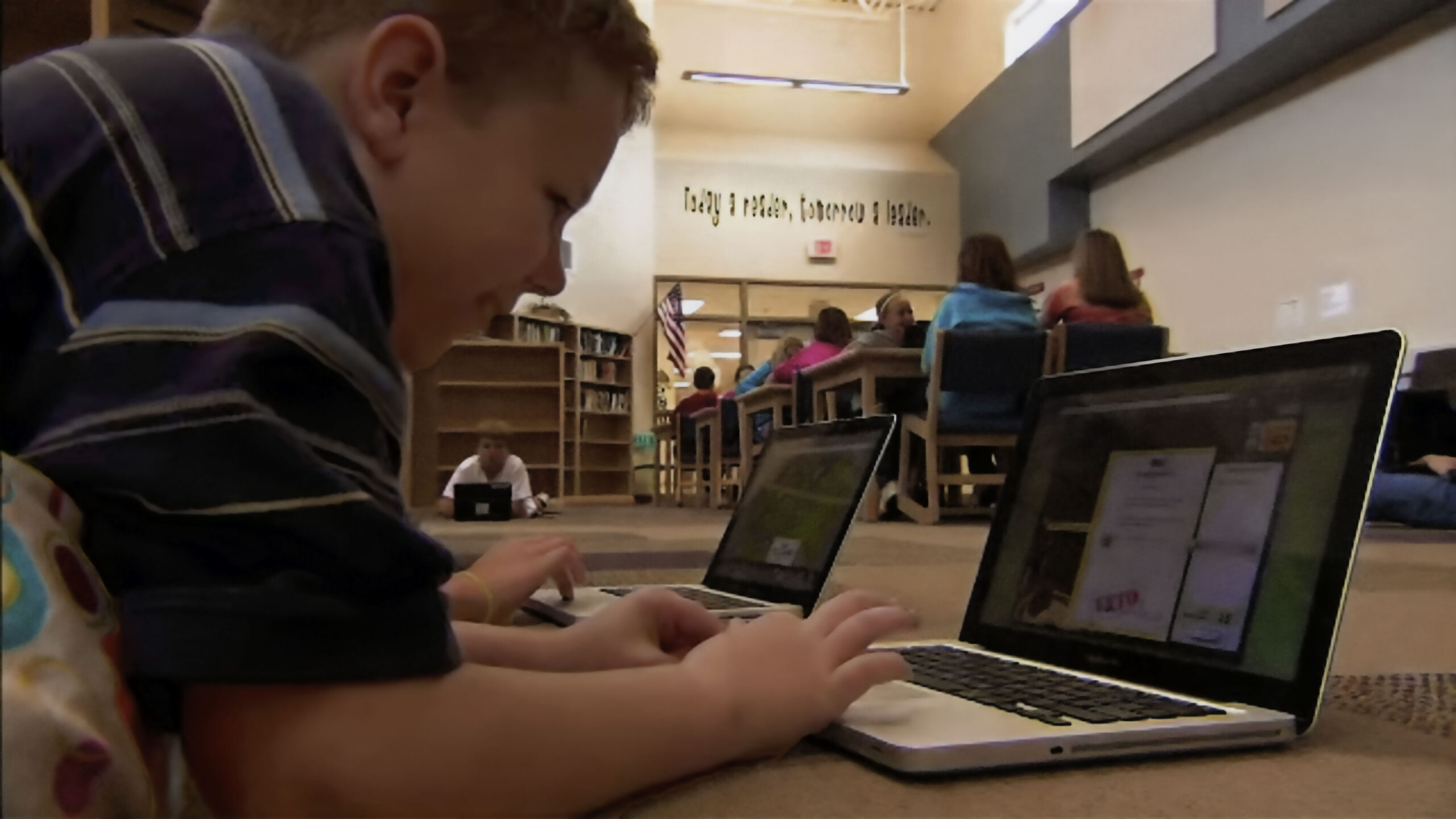
Challenge
The challenge was to create educational games that were not only educationally effective but also engaging and intuitive for children. We needed to design interfaces and experiences that were suitable for K-5 kids, each with different learning styles and tech literacy levels. Balancing educational content with fun and challenging gameplay mechanics was key to achieving both engagement and learning outcomes.
Research & Strategy
To ensure the success of each project, we conducted a combination of user research, paper playtesting, prototyping, and user testing. These tests allowed us to calibrate the game mechanics and find that perfect balance of fun while making sure we were achieving our learning objectives.
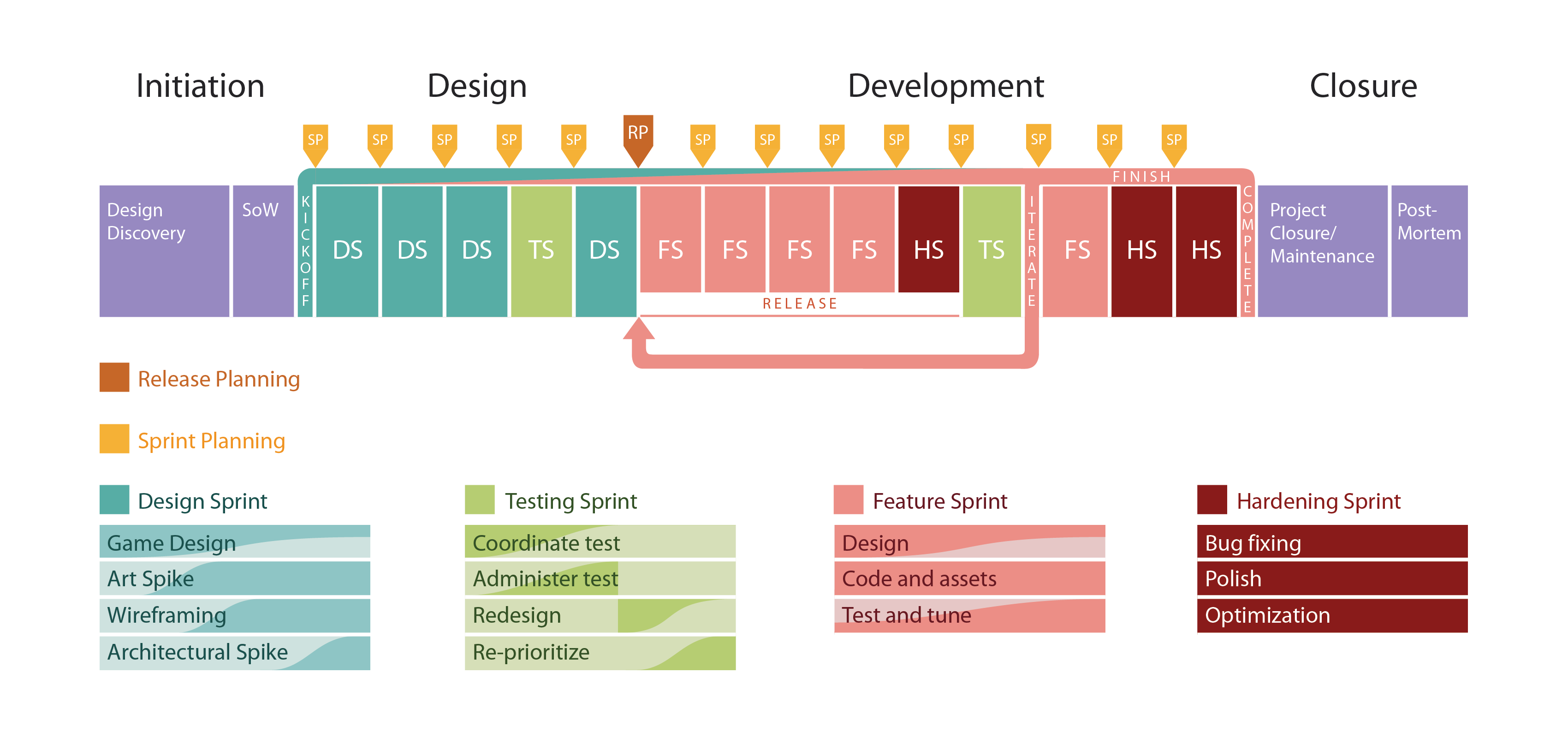
Process
As the Art Lead I worked closely with the illustration team to define the visual style of the game projects. This involved creating mood boards, concept art, mockups, and eventually final assets.
Working with the Game Designers I mapped out user journeys, wireframes, and built interactive prototypes. We iterated on designs based on feedback from educators and playtest sessions with students.
The UI design had to be kid-friendly and intuitive, with colorful, animated elements that could easily scale across different devices and run efficiently on low-end devices.
As a Technical Artist, I worked closely with engineers to integrate and optimize assets into the game engine, ensuring that animations, transitions, and interactive elements ran smoothly and efficiently.
Results & Impact
Filament’s publishing partners include companies like McGraw-Hill and Macmillan. With those partners our curriculum enhancing games have reached millions of students around the country. And with LMS integration our games have empowered teachers with data-driven insights and assessments on a student-by-student basis.
iCivics, another Filament Games partner, is a nonpartisan organization founded in 2009 by Supreme Court Justice Sandra Day O’Connor. iCivics uses gameplay based learning to advance civic education so young people have the confidence to shape the world around them. Our projects with iCivics are used by 145,000 active teachers across all 50 states, reaching over 9 million students with over 150 million meaningful gameplays.
Cool Choices, a game-based platform for promoting sustainability in the workplace resulted in a 3.1% reduction in energy usage than the same period a year prior, compared to 3.5% more electricity usage than the same timeframe in workplaces not using the platform. Overall, players that have participated in the Cool Choices card game have saved more than $730,000 annually and avoided more than 7.5 million pounds of annual CO2 emissions.
Key Takeaways
- User-Centered Design: Focusing on the needs and behaviors of the user (children in this case) was central to the success of each game project.
- Collaboration is Key: Working closely with different teams (artists, developers, educators) ensured that the games met both educational and user experience standards.
- Iterative Design Process: Constant user testing and iteration helped refine the product to best meet the needs of the children and educational goals of our clients.
